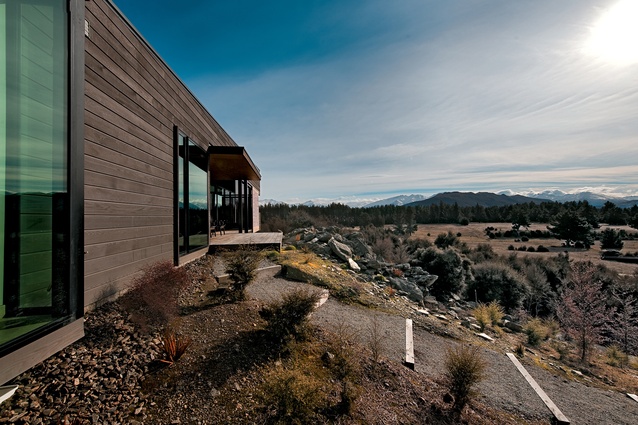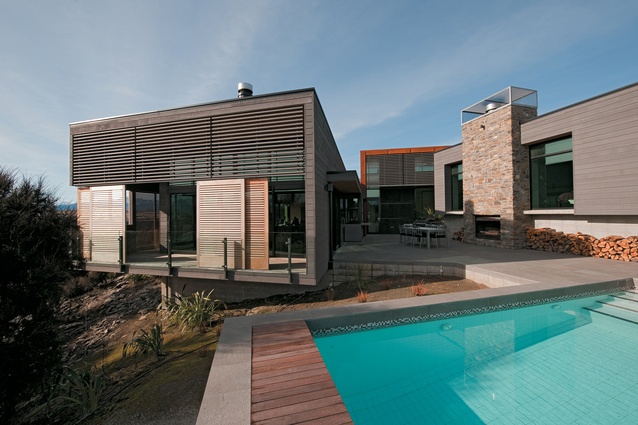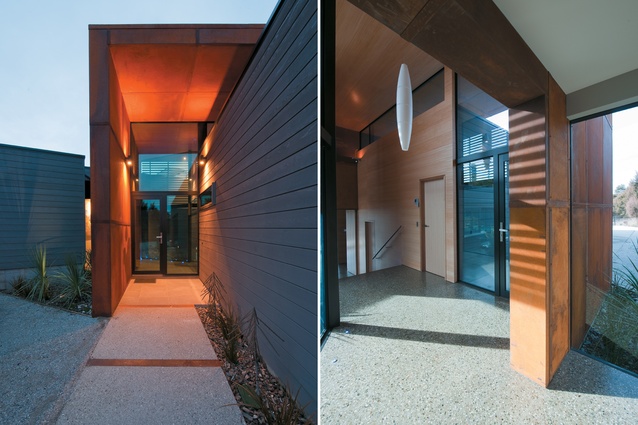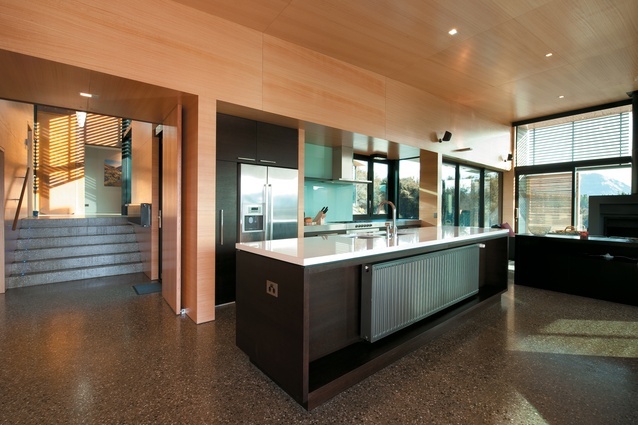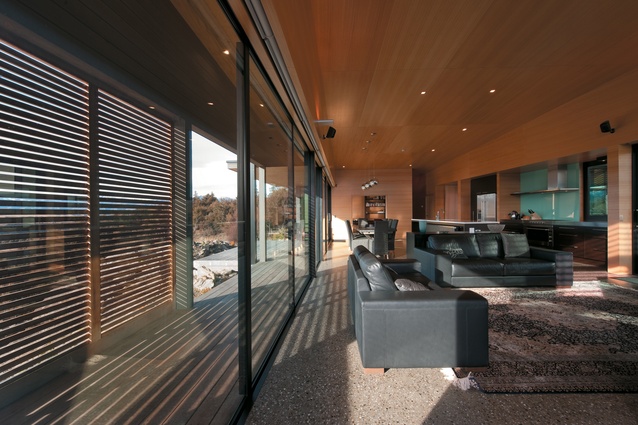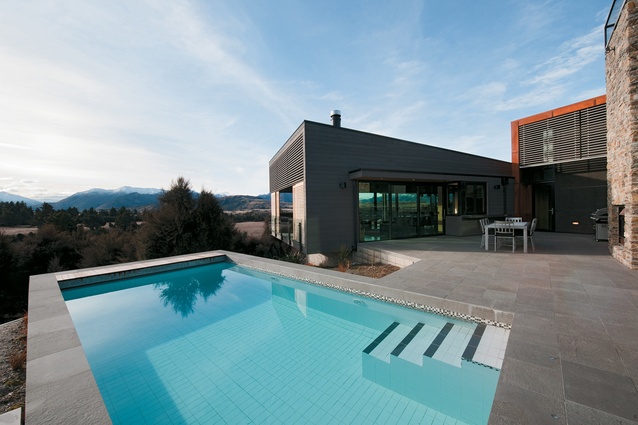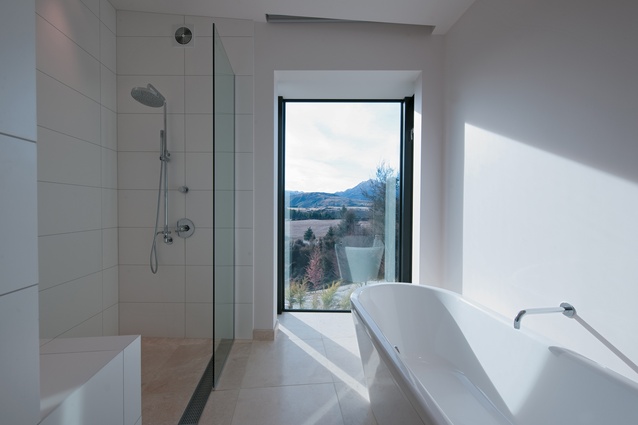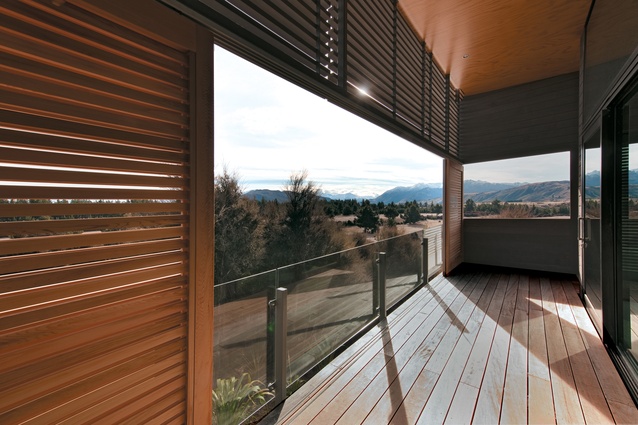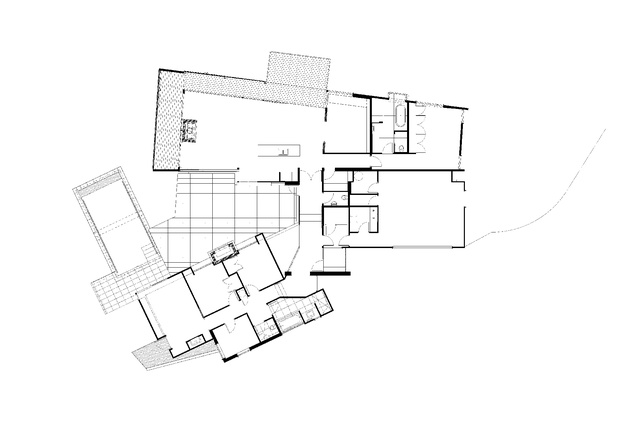Houses Revisited: Living in the view
A Central Otago house designed by Tim Dagg blurs the lines of the natural and built environment.
Here is a house that sits soundly within its landscape and enables an uncomplicated appreciation of its site. Not that that is unusual for New Zealand architecture. In architectural publications you will often see photographs that describe a vast landscape with a ‘speck’ of house, or an edge of a building framing the outlook.
So much so, that New Zealand’s landscape could be deemed as our domestic architecture’s best asset; rarely do you see internationally published books featuring a New Zealand house on a tight urban site. However, a house that is there merely as a place to frame the views, or carefully ‘blends’ into the landscape shouldn’t be considered a worthy fallback position: for the architecture to be a success, it should also establish itself as a space to live in.
This house, designed by Tim Dagg of Canterbury architecture practice Sheppard and Rout Architects, is on a section atypical of the sites that most residential architecture takes place on in Wanaka. (That is, one with views of the lake with the mountain peaks beyond.) The house rests on the edge of a hillside, but instead of a view of the lake it has an outlook to an establishment of kanuka trees.
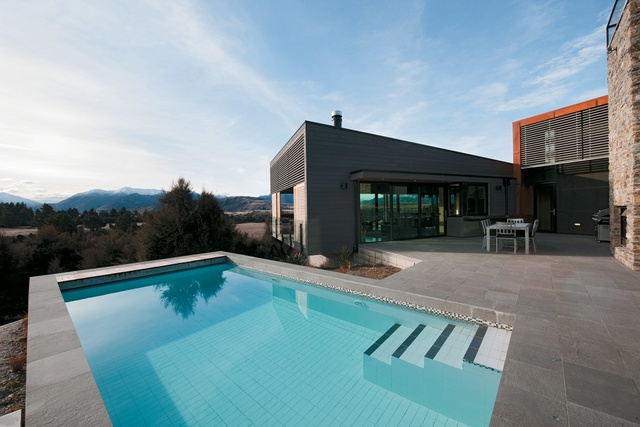
The more predictable pointed mountaintops of the South Island can still be seen on the horizon. To ground the architecture among the landscape’s strong forms it also had to possess such qualities, so in response Dagg has designed a geometrical house that soundly stretches across its land.
Its strong form and gray textural exterior connects and continues the same language of the alpine backdrop. However, this ‘blending’ is not only what the design of this house is concerned with; it extends the site as a reference, creating a more architecturally motivated house.
The access to the site means that one approaches the building from behind; it is the case that you experience the architecture before you understand its, and your, place within the land. The house, which is currently used as holiday accommodation, was designed with the notion that it would be the clients’ permanent home in the future. As such, the entrance to the house is formal – that is, there is no discrete, or incommunicative, entrance through a sliding door on the side of the house, now typical of the contemporary ‘bach’.
On the contrary, the entry is emphasised through the architecture – a corten steel-clad double-height element that rises above the general roofline of the house. The corten steel, with its rusted patina, is an allusion to its site – Dagg explains that the corten’s contextual connection is a reference to Central Otago’s historic ties to the gold mining industry and the machinery that was involved, which can be found (now rusted) in the area.
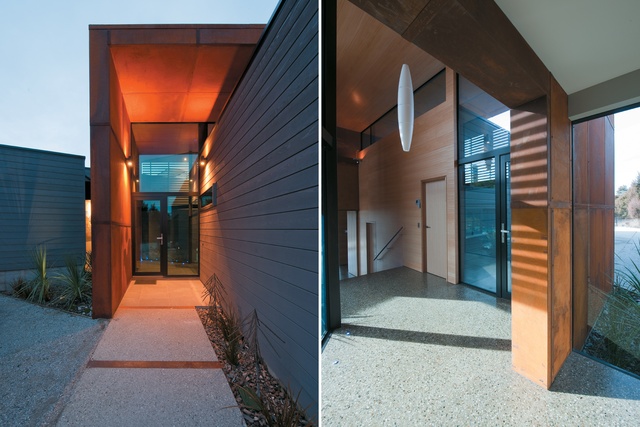
At entry, the plan splits into two pavilions, which have been pivoted to form a V shape that creates a sheltered courtyard in-between. The first of the pavilions extends towards the west, opening out in views towards the central courtyard. It comprises the guest wing, which features three bedrooms, a bathroom and a living area.
Unlike a manoeuvre that often appears in holiday houses, in which bedrooms and living spaces sprawl out and open up on the courtyard (prompting a feeling that you are at a beachside resort), the guest wing is elevated a half-level above the courtyard. This affords the guests some privacy, and in contemplation of the house’s cross section it provides some spatial interest. However, this was another design action determined by geographic considerations. “It is due to a conscious effort to reduce the site’s earth works,” says Dagg.
Access from entry to the second and foremost pavilion is gained after moving down and past a ‘boxy’ space that incorporates a garage, storage and sauna. This pavilion offers an experience of the site’s best views and contains the living spaces towards the west and the master bedroom towards the east.
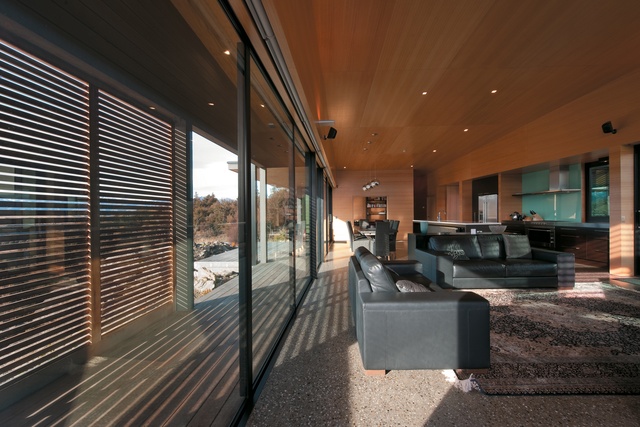
Towards the south of the living space is the courtyard – this pavilion opens directly onto it – and towards the north, in continuing the connection to the landscape, a balcony extends to connect the house to a rocky outcrop that was discovered during the early stages of design.
Dagg specified the material palette of the house in reaction to the site, its alpine outlook and the immediately surrounding kanuka bush. The smoky ash-stained cedar used to clad the majority of the building blends in well to its environs. A grey timber, instead of the usual stone vernacular adopted and often required by Central Otago councils, offers a welcome point of difference. However, it should be noted that the restrained use of stone didn’t continue through to the house’s chimney. The cladding has then been brightened and broken up with movable cedar screens that have been left natural.
Glass is still aplenty here: how else would one be able to capture the views of the landscape? But those screens that break up the cladding when looking towards the house, also work to intricately break up the view when looking from the house. Their described function is more of a pragmatic one, as they also serve to screen out the sun when the occupants require.
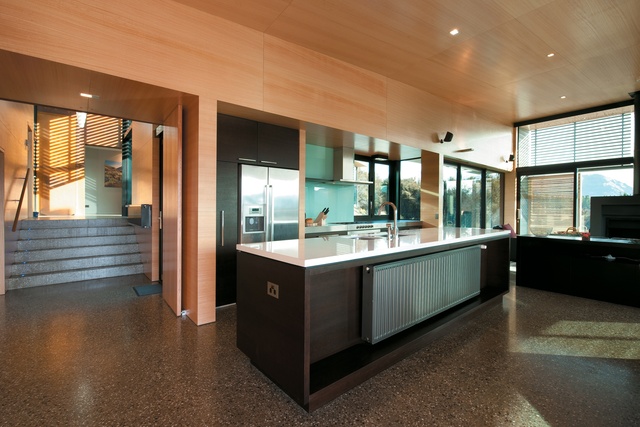
The interior material palette is unlike the interior architecture ‘norm’ that is often employed when a building is there for the purpose of experiencing the view. Instead of using stark white walls that would cleanly frame the landscape and become a backdrop for what can be seen outside, Dagg has continued a similar palette to that of the exterior.
The use of Tasmanian ash plywood creates warmth within the house, but it also works to unify the exterior landscape with the interior. And, with the use of the screens and transitional external spaces, a blurring of interior and exterior spaces, and of built and natural environment, occurs.
It wouldn’t be fair to simply describe this house as one that facilitates a sheltered place from which to look out. Yes, this is architecture from which you can survey the land and admire the landscape, but it also extends the contextual connections of its site, establishing an architecture that one can simultaneously value and enjoy the immediate surrounding – that of their own building.
This article first appeared in Houses magazine


